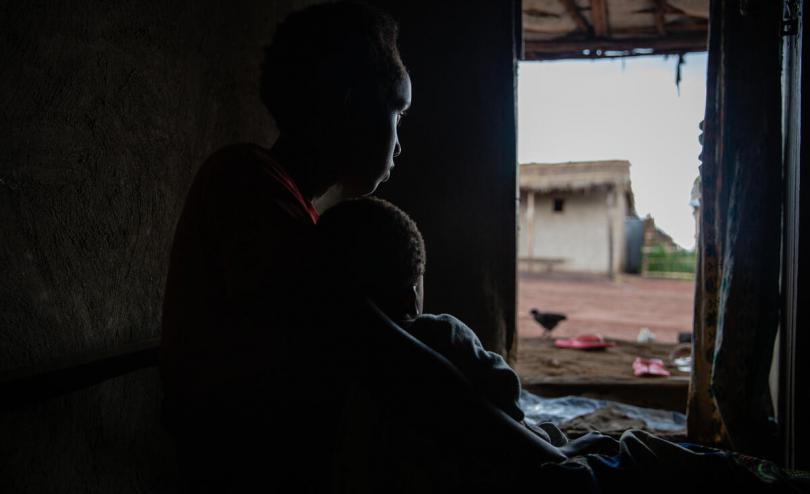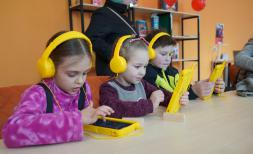1 in 6 children living in conflict zones at risk of sexual violence by armed groups

Ground-breaking methodology shows risk to children nearly ten times higher than in 1990
- Number of verified cases of sexual violence against children in conflict just tip of the iceberg
A staggering 72 million children—17% of the 426 million children living in conflict areas, globally, or 1 in 6—are living near armed groups that perpetrate sexual violence against them, a new report from Save the Children reveals.
Weapon of War: Sexual violence against children in conflict—which includes the very first analysis of the risk of sexual violence against children living in conflicts between 1990-2019—shows that nearly ten times more children are at risk now than three decades ago (8.5 million in 1990).
The countries where children face the greatest risk of sexual violence in conflict are Colombia, Iraq, Somalia, South Sudan, Syria, and Yemen.* This includes the risk of rape, sexual slavery, forced prostitution, forced pregnancy, forced sterilisation, forced abortion, sexual mutilation, sexual abuse, and sexual torture at the hands of armed groups, government forces and law enforcement.
Survivors face several challenges, which are compounded in conflicts. They include a lack of systems and processes to report the crime, the stigma, the fear of retaliation, and a lack of support and services.
More than 20,000 cases of conflict-related sexual violence against children—one of six grave violations—have been verified by the UN since 2006. Its most recent report on Children and Armed Conflict included 749 confirmed cases of sexual violence against children in 2019 alone. Of these, 98% were committed against girls, and the cases attributed to state forces almost doubled from 2018.
The verified cases, however, are likely to represent only a fraction of actual cases, as revealed by Save the Children’s new research.
Inger Ashing, CEO of Save the Children International, said: “Sexual violence is underreported at the best of times, but even more in conflicts areas—especially among children.”
“On average, only two cases of sexual violence against children living in conflict areas were reported every day in 2019. But we know that rape and other forms of abuse have been increasingly used against children in conflict—which is why these two cases a day only represent the tip of the iceberg. There are many more child victims of sexual violence we’ve never heard of, but who also urgently need support. Any form of sexual violence against a child is horrendous and must stop immediately.”
“The fact that sexual atrocities committed by state forces against children nearly doubled from 2018 to 2019 is shameful. Governments and their forces should and must do more to protect the most vulnerable in any conflict, including children.”
The report also reveals that:
- In the last seven years, a bigger proportion of armed groups that carried out sexual violence in conflict also targeted children.
- Of the 54 conflicts globally, 22 involve reported use of sexual violence against civilians, while 15 involve armed groups explicitly reported as having perpetrated sexual violence against children.
- While boys only made up 2% of UN-reported cases of sexual violence in 2019, they have been strategically targeted during the last years in conflicts in the Central African Republic, the Democratic Republic of Congo, South Sudan, and Syria. In Afghanistan, most cases reported in 2019 related to boys, where they’re often exploited and enslaved by men in positions of power.
Sexual violence is often used as a weapon of war against children and other civilians to terrorise them, spread fear and intimidation for political and military gain, to ethnically cleanse or humiliate an ethnic group, or to punish civilians for suspected support of opposing forces.
The trauma it inflicts can have long-lasting physical, psychological, social, and economic effects. The brutality of the physical act itself can be especially damaging for children whose bodies aren’t fully developed. Girls might suffer uterine prolapses, fistula, and other injuries to their reproductive system, and face complications and death due to early pregnancy and unsafe abortions. Both girls and boys risk urinary and anal damage, and exposure to sexually transmitted diseases that, left untreated, can cause long-term harm and even death.
Dr. Denis Mukwege, 2018 Nobel Peace Prize Laureate, and founder and Chief Medical Officer at Panzi Hospital in DRC, said: “I first opened Panzi Hospital in 1999 with the intention to build a centre of excellence for maternal health in the Democratic Republic of Congo. I never could have imagined that some of my first patients were not labouring mothers and their newborn babies, but babies that had instead been raped. The youngest survivor I ever treated was only six months old when she was assaulted.”
“That over 72 million children in the world today are living in proximity to armed groups that use sexual violence against minors is simply and utterly unacceptable. The international community can and must do more.”
Angelina Jolie, Special Envoy to the UNHCR on Sexual violence in conflict, said: "We’ve known about these crimes for decades—and yet they continue, and in many cases, only get worse, because of the lack of prevention and accountability. Investment in a stable and safe world begins with the protection of children.”
Save the Children calls on world leaders, security experts, donors, members of the UN, and NGOs to:
- Put children at the centre of any international action against sexual violence in conflict, which includes boosting services and programmes that acknowledge and meet their special needs;
- End the impunity of sexual violence against children by strengthening laws and enforcing them, while holding perpetrators to account;
- Strengthen and better coordinate the collection of data on sexual violence against children in conflict.
The aid organisation also calls for increased funding to ensure these demands can be met.
“The use of sexual violence as a weapon of war is abhorrent,” added Ms. Ashing. “Survivors of these atrocities deserve more from the international community. We must come together to ensure this grave violation is wiped out once and for all.”
Notes to editors:
- *Listed in alphabetical order.
- To estimate the number of children in conflict at risk of sexual violence, Save the Children, in cooperation with the Peace Research Institute Oslo (PRIO), has calculated how many children live 50km or closer to conflicts where at least one armed group or force has perpetrated sexual violence against children in a given year.
- Unlike UN reports, which cover a limited number of conflicts, this provides an estimate for the number of children at risk in all armed conflicts around the world.
- Save the Children and PRIO use Sexual Violence in Armed Conflict (SVAC) Dataset based on reports by Amnesty International, Human Rights Watch, and the US State Department, as well as subnational data on conflict events from the Uppsala Conflict Data Program Georeferenced Event Dataset (UCDP-GED), and population estimates from the UN Population Prospects. The data gathered covers the period of 30 years, from 1990 to 2019.
Spokespeople available, please contact:
- Anna Rauhanen anna.rauhanen@savethechildren.org
- Out-of-hours and weekend: Media@savethechildren.org.uk / +44 7831 650 409
Read the full Weapon of War: Sexual violence against children in conflict here. Angelina Jolie has written an op-ed for Times Magazine on the report, which you can find here.




